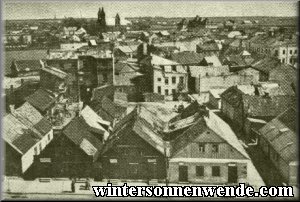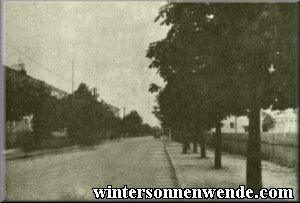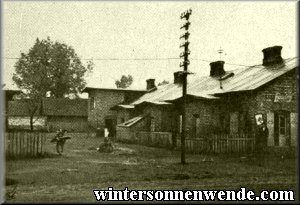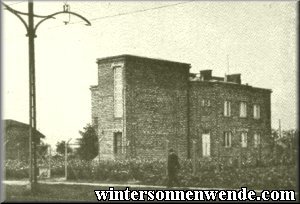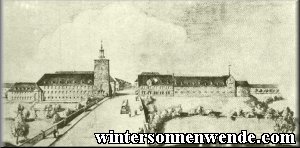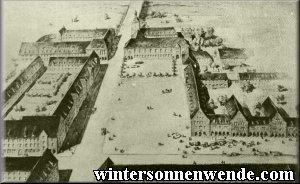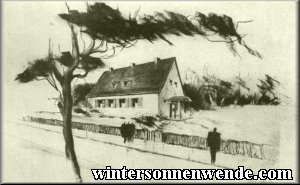 |
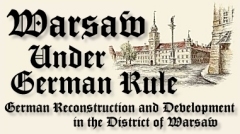 Housing and Settlement Programs The establishment of the General Government and the development of German administration which this involved has expanded the easternmost German living space tremendously. Spatial expansion has posed great and important challenges to housing development; this will be of vital significance to the German people living in the East, as a healthy living environment and sufficiently large accommodations are prime prerequisites for the development and management of this area which is to become home to many Germans. In terms of housing the District has suffered greatly from the impacts of the war. Even before the war there had been a severe shortage of small apartments in the former Polish state; but the additional destruction of housing facilities in the course of the war has rendered the situation quite intolerable. Of the 20,650 buildings in the city precinct of Warsaw before the war, some 2,200, or 10.6%, were completely destroyed; 8,740, or 41%, were partially or extensively damaged, or gutted by fire; and another 30% sustained slight damage.
Aside from the most immediate program for accelerated completion of already partially constructed buildings, German housing policies had to undertake the construction of extensive new housing developments to create more living space in the newly won regions. In this regard the German administration was left with a sad legacy indeed. As history shows, Poland has never been capable of structuring its territory in a practical and sensible way on its own initiative but rather has subsisted chiefly on the fruits of the German pioneer labors which had begun with the vigorous eastward-directed policies of the first German Emperors, were perpetuated systematically by the Teutonic Order in the early 13th century, and were given their last expansion and transmission by the powerful league of the Hanseatic towns. The Polish have not been able to develop their own methods for the establishment and expansion of a city or the shaping of their countryside because they do not have that quality which is vital for a uniquely national development of a settlement frontier: a conscious national tradition with close ties to their ancestral soil. Polish state leadership also lacked an understanding of the goals of a national sense of community. And this is why there is no characteristic "Polish living space" which might serve as the basis for a healthy national existence. The few "cities" in the East, the focal point of whose layout is usually a market square or a church, reveal a predominantly German planning impetus, and their great architectural monuments were created by German artists. Beyond that, the haphazard development of Polish cities, which as a rule have no discernible growth zones or building alignment or any segregation of residential, business and industrial sectors, shows an absence of any kind of organic unity. This is why the system of Polish mismanagement abandoned the greatest part of the buildings to their fate, with no regard for the needs of their inhabitants. Disorganized, unrestrained and muddled agricultural policies on the one hand, and unthought-out agglomerations of industrial facilities destructive of the countryside's natural beauty on the other, had combined to result in an uneven distribution of the population, resulting in turn in a terrible shortage of housing.
Besides being incapable of creating healthy residential facilities in the cities, the Polish have also shown no sense of consonance between houses and the landscape in their settlement of the rural areas. Square houses with ugly flat roofs giving them the appearance of matchboxes lying flat or perched on edge are scattered randomly along the roadside or stand off somewhere in the middle of a field – anomalies in the misunderstood countryside. In other areas, rows of houses line the road for miles, devoid of any central focus or coherence, and are not only repulsive in appearance but usually also lack sewers and plumbing. In these scattered settlements as well, the Poles, in their careless jumbling of wildly different architectural styles, have not only betrayed a lack of independent creative thought and perpetrated a violation of tasteful architectural practice (if there can even be any mention of such a thing in context), they have also utterly failed to recognize the needs and common interests of the inhabitants with respect to sanitation. This is why settlement in the East is not merely a technical matter but rather a question of the cultural development of a German community. And with that, the task is set: the development of an internally well-ordered community competent in colonial matters, established in a "German Residential Quarter" (urban) or "Settlement Region" (rural). Bearing in mind the atrocious Polish conditions described previously, it is clear that there is no model here for us to adhere to in the development of a German town or the establishment of a German settlement. All efforts will be in completely new and unfamiliar territory. Besides the extensive responsibilities of urban planning and housing policies, the configuration of the German sphere of settlement also entails thorough studies of population policy, a detailed examination of ground conditions, consideration of the commercial and industrial enterprises, landscape and economic planning, the drawing up of building and development plans, the delimitation of administrative jurisdiction and political units, the development of farmsteads and the establishment of roads. Accomplishing all these tasks will require not only the co-operation of the professional experts directly involved but also the active, enthusiastic participation of each and every national comrade serving here in the East. The hostilities which broke out in the East in June of 1941, and the ensuing demand for construction materials (iron, lumber, cement etc.) at the front, have resulted in a ban on the construction of all buildings not vital to the conduct of the war. This temporary suspension of building activity has been used to plan future construction programs for the individual counties. To provide decent accommodations for all Germans in the District, more than 2,000 new buildings will be erected in the next few years. Their construction presents considerable challenges to urban planning, since these building projects are to be rationally and intelligently integrated into the future German residential quarters of the county seats. The German Residential and Settlement Company Inc. of Warsaw has been commissioned with the construction of these new buildings. To ensure uniform residential and settlement policy, this company has been chosen by the government as the bearer of sole responsibility for the creation of all new residential facilities and of all German settlements.
Some distance away from the German center of the new city, the Polish will have a residential quarter of their own. This is expressive of the sense that the Polish are separate and distinct from German life and lifestyle; as well, it will ensure that they can be readily called in to useful employment whenever the need arises. Once all the land surveying has been completed, and as soon as the ban on construction is lifted, the creation of German residential sections and settlements will immediately begin in all counties of the District.
At the same time, however, these German residential regions will be a cultural act and statement of Germanness which, in contrast to the tasteless and uncultured architectural style of the Polish state, will create an architecturally pleasing, modern living environment in accordance with the spirit of National Socialism, and which – like the castles of the Teutonic Knights or the Hanseatic trading centers of days gone by – will bear witness to the flowering of National Socialism for centuries to come.

*[Trans. note:] HJ = Hitler-Jugend, "Hitler Youth", a National Socialist youth organization. Established in 1926 and made mandatory in 1939, the aim of this organization was to provide National Socialist political education and
pre-military training for all German boys and young men. |





